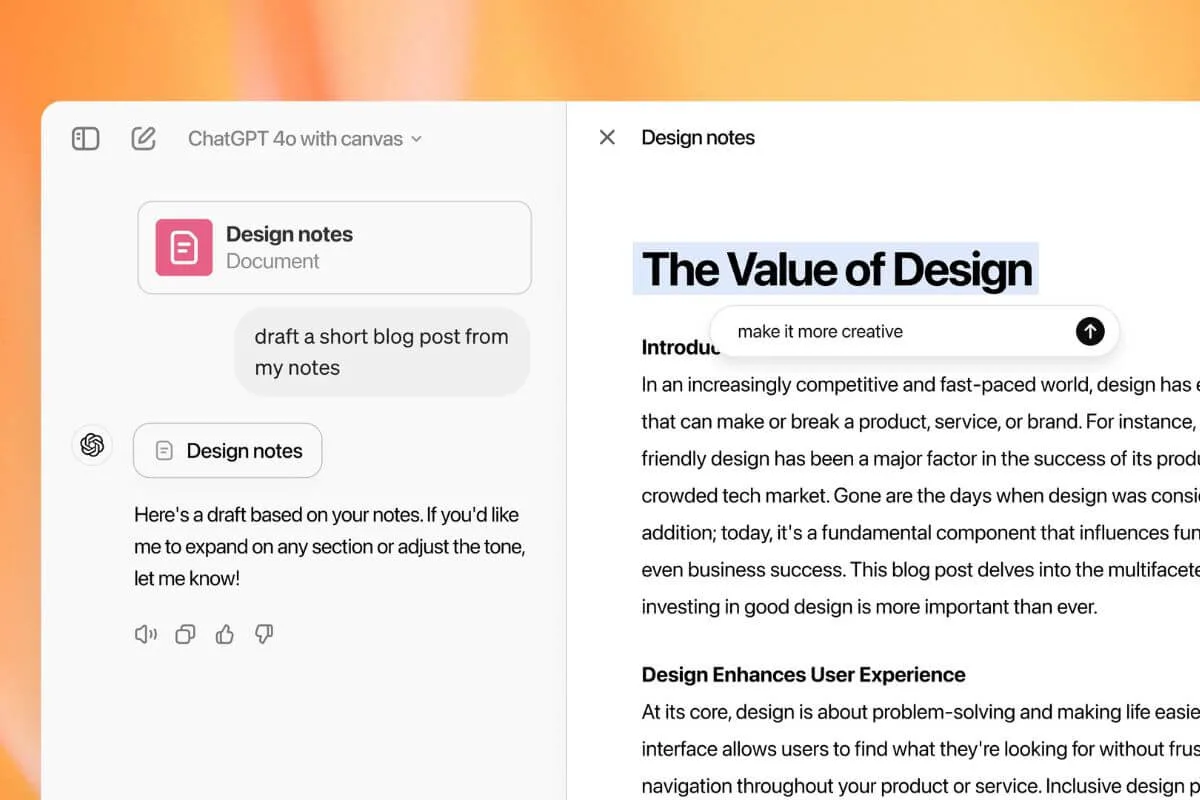
OpenAI has unveiled Canvas, a new interface designed to transform how users interact with ChatGPT for writing and coding projects. This feature, currently in early beta, opens in a separate window, allowing for seamless collaboration between users and the AI, the Microsoft-backed company announced on October 3.
Also Read: OpenAI Raises USD 6.6 Billion to Accelerate AI Research and Expansion
Features and Benefits of Canvas
Canvas was built on GPT-4o and provides a more context-aware experience, enabling users to receive inline feedback and targeted edits. The interface includes a variety of writing shortcuts, such as suggesting edits, adjusting document length, changing reading levels, and adding emojis for emphasis. For coding, users can benefit from features like reviewing code, adding debug logs, and translating code between programming languages.
Technology Behind Canvas
OpenAI says the model has been trained to recognise when to trigger Canvas for specific writing and coding tasks, improving its ability to provide precise suggestions. Early evaluations show that the Canvas model outperforms previous iterations, particularly in the accuracy and quality of comments.
"We trained GPT-4o to collaborate as a creative partner. The model knows when to open a Canvas, make targeted edits, and fully rewrite. It also understands broader context to provide precise feedback and suggestions," OpenAI said in a blog post.
Also Read: Microsoft to Invest EUR 4.3 Billion for AI and Cloud in Italy
Plans for Canvas Accessibility
Currently available to ChatGPT Plus and Team users globally, OpenAI plans to extend access to Enterprise and Edu users soon, with a rollout to all free users once the feature exits beta.
"Making AI more useful and accessible requires rethinking how we interact with it. Canvas is a new approach and the first major update to ChatGPT's visual interface since we launched two years ago. Canvas is in early beta, and we plan to rapidly improve its capabilities," OpenAI said.















